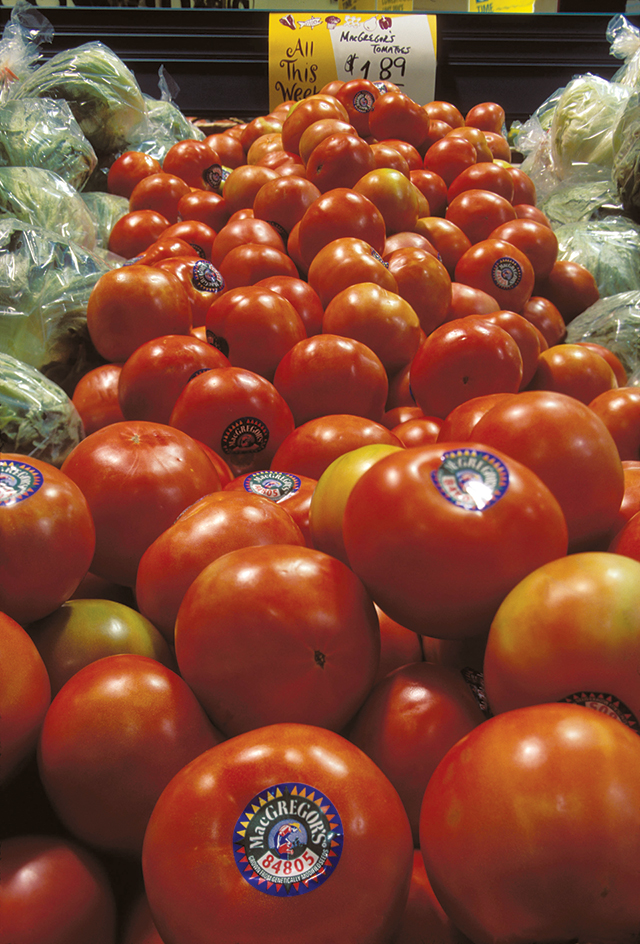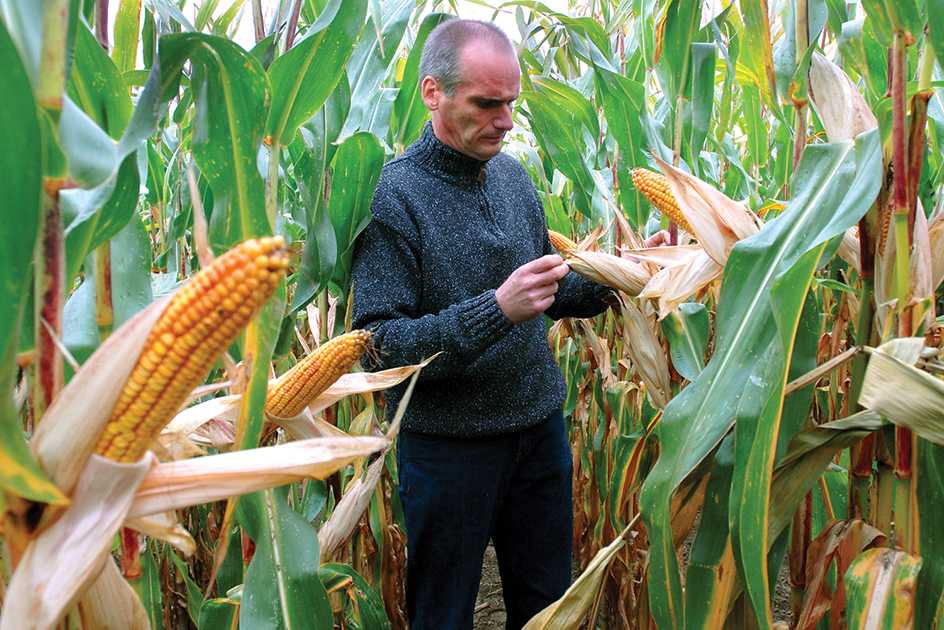Genetically modified food, often abbreviated GM food, is food made from organisms—usually crop plants—that have been altered through genetic engineering . Genetic engineers use special techniques to change the genes in a plant or animal, producing a genetically modified organism (GMO). The scientists alter the genetic material of certain crops and animals to introduce new traits (characteristics) that can benefit farmers, food manufacturers, consumers, or the environment. Most genetically modified crops grown today have been designed to improve farming. Some of them feature an increased resistance to disease or to damage from insects. Other GM crops have an improved tolerance for herbicides (chemicals used to kill weeds). Growing such crops can help reduce farmers’ reliance on expensive and environmentally harmful insecticides and herbicides .

Genetic engineers can introduce genetic material from virtually any living organism into crops. To engineer a crop plant to resist insect attacks, for example, scientists usually take a gene from a bacterium called Bacillus thuringiensis (Bt). These bacteria make proteins that kill insects. By transferring the gene that controls the production of one of these proteins into plant cells, scientists can engineer a crop plant that produces the Bt protein. Eating such a plant will kill certain insect pests but cause no obvious harm to people or wildlife. Using genes from other organisms, engineers can modify crops to improve the nutritional value or taste of foods or to increase a food’s shelf life.
The first widely available GM foods reached the market in the mid-1990’s. In some parts of the world, farmers rapidly adopted genetically modified crops, and GM foods have come to make up a significant portion of people’s diets. In other areas, concerns about the safety of GM crops have led countries to prohibit them from being grown and consumers to avoid purchasing and consuming GM foods. As scientists develop and introduce new kinds of GMO’s, governments have worked to regulate their production and trade.
Production and consumption.
The United States leads the world in the production of genetically modified crops. Most of the corn and soybeans grown in the United States are genetically modified. Farmers in the United States also grow large amounts of genetically modified cotton and canola . Other major producers of genetically modified crops include Argentina, Brazil, Canada, China, and India.
Many ingredients used in processed foods, such as cooking oils, sweeteners, starch, and protein, come from corn and soybeans. Therefore, most people in the United States and other GM food-producing countries have eaten some form of genetically modified food. However, most other foods—including almost all fresh fruits and vegetables—are not genetically modified.
Safety concerns.
Most independent scientific organizations have concluded that genetically modified organisms are safe to grow and consume. But some people worry that GM foods are still relatively new and that experts may not have enough information about the safety of eating them. Other people wonder about the potential long-term consequences of releasing genetically modified crops into the environment. For example, some fear that herbicide-tolerant GM crops might spread out of control, becoming herbicide-resistant weeds. They also worry that insect pests might become increasingly immune to crops designed to resist them.
Regulation.
In most countries, various government agencies must review any GM food for safety before it can be sold. In the United States, the Department of Agriculture , the Environmental Protection Agency , and the Food and Drug Administration (FDA) all have the authority to review certain kinds of GM foods. Some GM foods must pass review by all three agencies. The review process differs in other countries.
Some countries have strict requirements for the labeling of GM foods. They may require all GM foods to have special labels so that consumers can know which foods contain genetically modified ingredients. In Europe, for example, GM foods must carry such labels. However, special labels are not required by law in the United States.
Differences in regulations among countries create challenges for international trade. For example, food manufacturers must keep genetically modified and conventionally produced foods separated so that they can be appropriately labeled for sale in a country with strict labeling requirements. In the United States, however, farmers often mix genetically modified crops with non-GM crops during harvesting and storage. This practice makes it virtually impossible for processors to know which type of crop they are using when manufacturing various food products, unless they specifically seek out crops that have been handled separately.
Development.
Virtually all foods people consume today have had their genetic makeup gradually modified through thousands of years of selective breeding. But scientists did not succeed in using genetic engineering techniques to directly modify crop genes until the 1980’s. A tomato marketed in the United States in 1994 became the first genetically modified food sold. The genetically modified tomato was designed to stay ripe longer without getting soft. However, this tomato did not achieve commercial success. Since then, scientists have developed other genetically modified crops that have been widely adopted in the United States and other countries.

Scientists are working to develop genetically engineered foods with enhanced nutritional content and GM crops that can be grown using less water. They are modifying some products, such as peanuts , to make them less likely to cause allergic reactions. Scientists are also working to genetically modify animals used for food. For example, scientists have attempted to genetically modify salmon so that they grow faster than normal. In 2017, GM salmon was first approved and marketed in Canada. That same year, the FDA approved GM salmon for sale in the United States.
